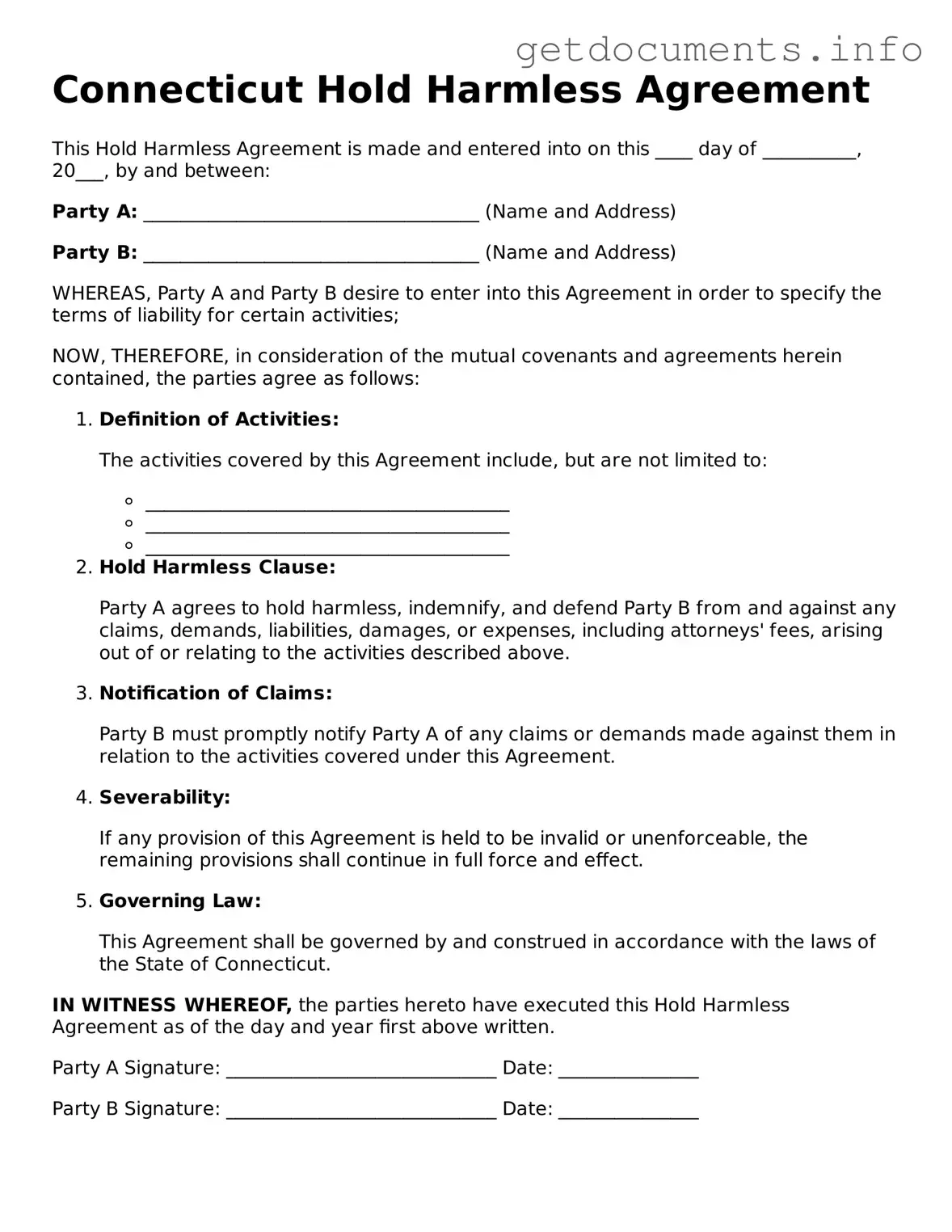The Connecticut Hold Harmless Agreement form serves as a crucial legal document designed to protect one party from liability for damages or injuries that may occur during a specific event or activity. This form is often utilized in various contexts, including rental agreements, construction contracts, and event planning, where one party seeks to safeguard themselves from potential claims brought by another party. By signing this agreement, the party assuming the risk agrees to hold the other party harmless, meaning they will not hold them responsible for any injuries or damages that arise. Key elements of the form include clear identification of the parties involved, a detailed description of the activities covered, and specific language outlining the extent of the liability waiver. Additionally, the agreement may require signatures from both parties, affirming their understanding and acceptance of the terms. This form not only fosters transparency between the parties but also encourages responsible planning and risk management. Understanding its implications is essential for anyone engaging in activities that could lead to unforeseen liabilities.
